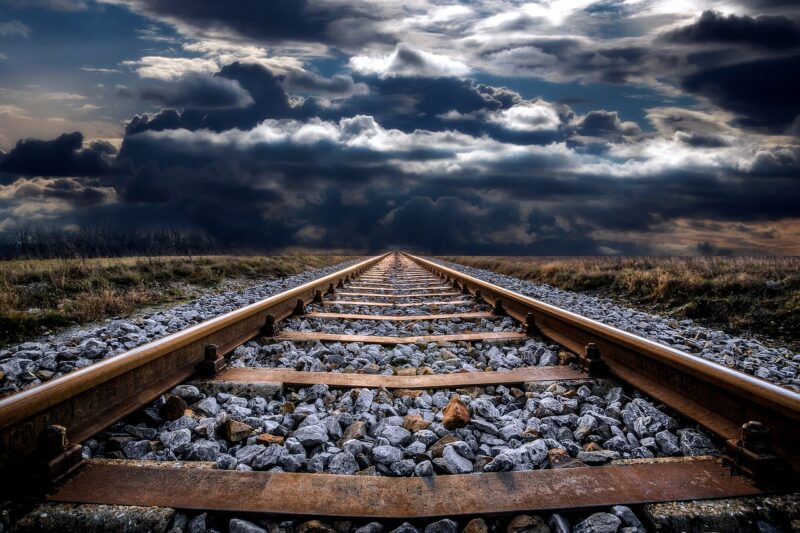The World’s Oldest Railways and the Fascinating History Behind Them
November 11, 2024

Railways have played a pivotal role in shaping the modern world, serving as a backbone for transportation, trade, and communication. The history of railways is not merely about the tracks and trains; it reveals the ingenuity and determination of those who sought to bridge distances and connect cultures. In this article, we will explore some of the world’s oldest railways, delving into their intriguing histories and the impact they had on society.
1. The Birth of the Railway
The idea of using railways can be traced back to ancient Greece and Rome, where tracks of stone were used to transport heavy goods. After centuries of evolution, the modern railway emerged in the early 19th century. The first documented steam locomotive, built by George Stephenson in 1814, laid the foundation for railway travel as we know it today.
In 1825, the Stockton and Darlington Railway in England became the first public railway to utilize steam locomotives. It was a groundbreaking achievement, demonstrating the commercial viability of rail transport.
A. The Stockton and Darlington Railway
The Stockton and Darlington Railway was primarily intended to transport coal from the mines in County Durham to the port of Stockton-on-Tees. This innovative line marked the dawn of the railway age. The railway consisted of 25 miles of track and opened on September 27, 1825. Engineers employed horse-drawn wagons along the line before steam locomotives were introduced, creating greater efficiency.
Nearby towns experienced economic growth, and rail became the preferred method of transporting goods, leading to significant industrial advancement.
2. The Liverpool and Manchester Railway: A Game Changer
The Liverpool and Manchester Railway (opened in 1830) is often hailed as the world’s first fully operational railway line that utilized steam locomotives for both freight and passenger services. This railway illuminated the potential of rail travel on a broader scale, providing essential connections between urban centers and rural areas.
B. The Impact of the Liverpool and Manchester Railway
The 31-mile railway enabled swift movement of goods, drastically reducing travel time. Prior to its inception, transporting goods by horse-drawn cart could take days; this railway facilitated transportation in mere hours. It significantly contributed to the Industrial Revolution by fostering the movement of raw materials and finished goods.
Moreover, it was marked by the introduction of scheduled train services, setting standards for future railways worldwide. The Liverpool and Manchester Railway became a model for many subsequent lines worldwide.
3. The Development of Railways in Other Regions
While the UK was at the forefront of railway innovations, countries across the globe began to adopt and adapt rail technology to meet their unique transportation needs.
A. The First Railway in the Americas
The Quincy Adams & Boston Railroad, opened in 1826, is credited as one of the earliest railways in the United States. Designed for transporting granite from the quarries in Quincy, Massachusetts, it paved the way for future railway development in North America. Other railways quickly emerged, with the Baltimore and Ohio Railroad (B&O) in 1827 being among the first to transport both freight and passengers.
B. Railways in the Rest of the World
In Europe, the Bavarian Eastern Railway, the first railway in Germany, began operations in 1835. It connected Nuremberg and Fürth. Similarly, as railway technology spread, countries began constructing their lines, igniting national infrastructure projects.
In addition, the Transcontinental Railroad in the United States completed in May 1869, revolutionized transport by connecting gold rush towns in California with the eastern states, significantly impacting the country’s economy and expansion.
4. The Age of Expansion and the Golden Age of Rail Travel
As we moved into the late 19th century, the expansion of railways reached its golden age. Countries invested heavily in their railway infrastructure, recognizing its vital role in facilitating economic growth and connecting regions.
A. Advances in Technology
Innovations like the introduction of the steam locomotive by pioneers like Isambard Kingdom Brunel and the development of standard track gauges allowed for improved transportation. The Union Pacific Railroad and Central Pacific Railroad connected through the First Transcontinental Railroad, making coast-to-coast travel possible in America.
In Europe, the continent experienced an extensive railway network that connected major cities and regions, fostering the growth of trade, industry, and tourism.
B. The End of an Era
The golden age of rail travel slowly transitioned into the mid-20th century as the popularity of automobiles and air travel surged. Railways began to face challenges, often leading to decline in passenger numbers and financial difficulties. However, many countries recognized the continued potential for high-speed rail systems, leading to significant investments in modernizing rail infrastructure.
5. The Legacy of the World’s Oldest Railways
Today, the world’s oldest railways still hold significant historical and cultural importance. They have become tourist destinations, offering scenic journeys through picturesque landscapes and historical insights into their origins.
Many railway lines have been preserved as heritage railways, allowing visitors to experience the charm and nostalgia of steam engine travel. Additionally, modern technology continues to build upon the previous innovations as countries invest in high-speed trains and eco-friendly transport solutions.
As we reflect on the fascinating history of railways, we recognize their enduring legacy in connecting people, cultures, and economies worldwide.
Conclusion
The world’s oldest railways showcase humanity’s ingenuity and determination to overcome challenges in connectivity and transportation. From the early tracks laid in the 19th century to the modern systems we see today, the railway has been, and continues to be, a transformative force shaping societies. By understanding their history, we gain insight into the vastness of progress and the importance of transportation systems in our everyday lives.






